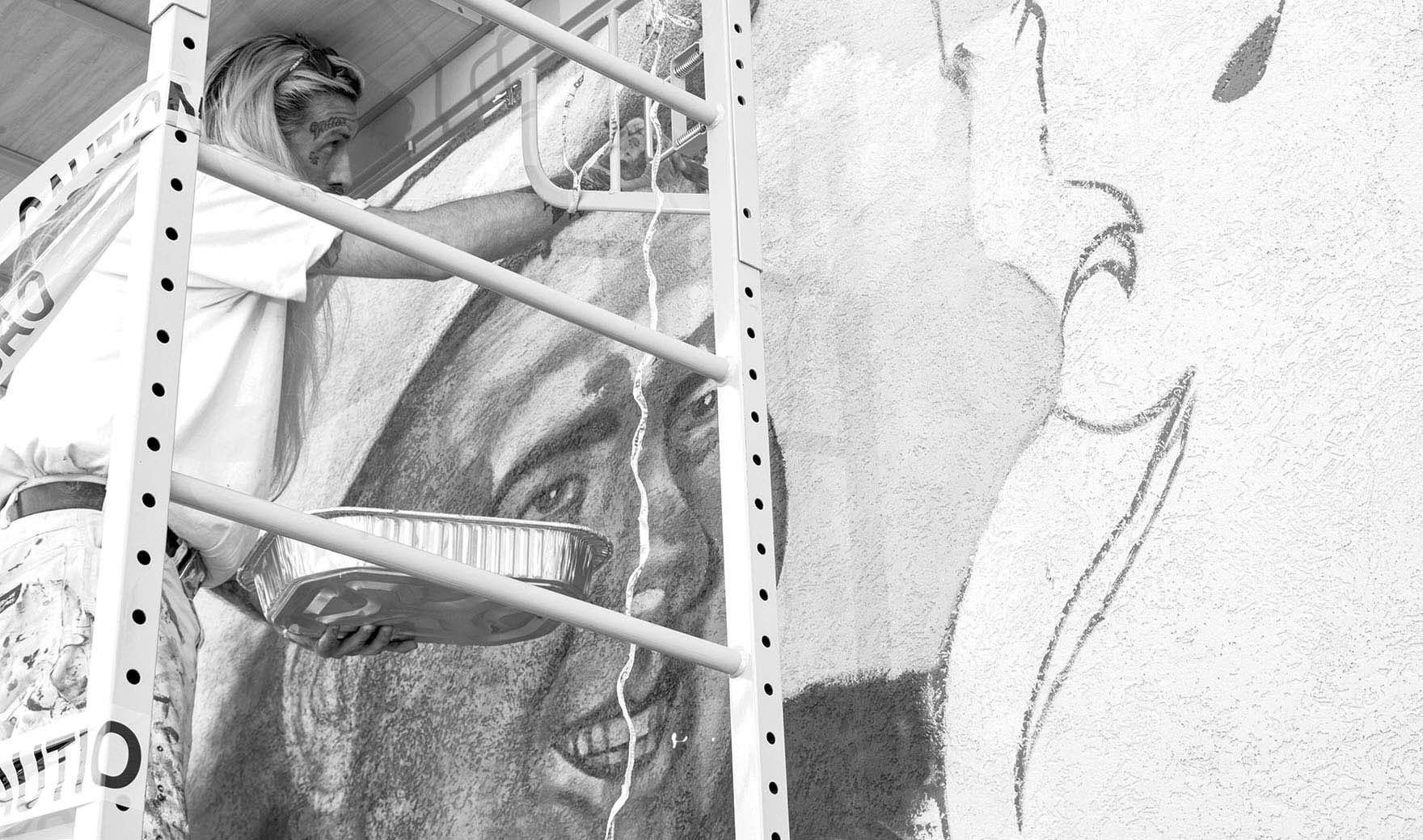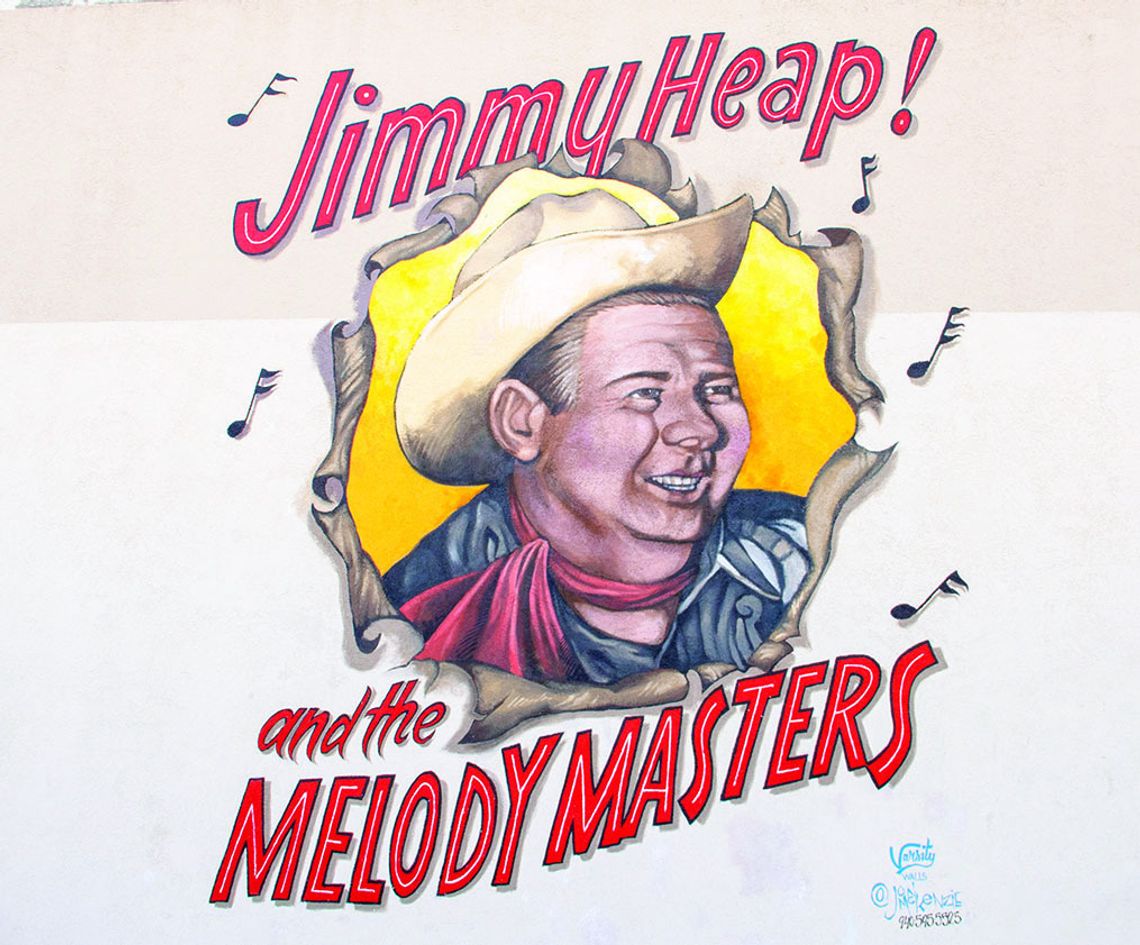Located at West Second and Talbot streets, a new mural on the side of the Historic Kincl Building honors Taylor legends Jimmy Heap and the Melody Masters.
The design is based on a Capitol Records cover, originally in black and white, which Texas-based artist Jon McKenzie recently brought to life with eye-catching color. Heap’s family commissioned the work.
“I was kind of excited because … Western art, cowboy art, all of that has been in for a while, so it was neat to be able to do something in that vein,” McKenzie said of the painting that features Heap in a cowboy-like outfit to match the band’s country-western music.
The project helped McKenzie, a fan of country music, learn more about the group.
According to the Texas State Historical Association, the band’s songs “The Wild Side of Life” and “Release Me” are two of the most iconic tunes in the genre, with the latter reaching No. 5 among the Billboard Top 10.
Heap was a third-generation Taylor native and formed the band in 1948 after returning to his hometown, following his discharge from the Army Air Corps in World War II.
The band played in dance halls across Central Texas and even had a show on the KTAE radio in Taylor.
“(I wanted) to keep his memory alive,” said Heap’s son, David, who sponsored the mural with the support of Kincl building owner Steve Truex. “My family’s been here before Taylor was a town.”
During the years, the band went through many changes. In the late 1950s, the group incorporated a rock sound to create rockabilly music. It then became a show band with adult comedy skits in the 1960s that headlined in Las Vegas at the Golden Nugget casino.
“He was a great dad. (We) went fishing whenever he had a day off,” Heap said. “(He) picked me up at school for lunch because that was usually the only time I’d get to see him because he was always playing at night. He used to play about six or seven nights a week.”
In addition to building a music career, Jimmy Heap began one of the first large homebuilding companies in Taylor with bandmates Cecil Harris and Bill Glendening.
HGH Inc. constructed over 200 homes in the city, according to Heap’s son.
The band disbanded in 1977, and Jimmy Heap died the same year in a boating accident. He is survived by two sons, his grandchildren, great-grandchildren and wife, who visited McKenzie while he was working on the mural to provide suggestions for final touches.
“It was sort of invaluable having (his wife) stop by that last day. … And that was, like, my final sort of approval on the job,” McKenzie said. “To have a piece of artwork that I was commissioned to create that had this history, not only in the family but within the history of Taylor, was a neat experience.”




